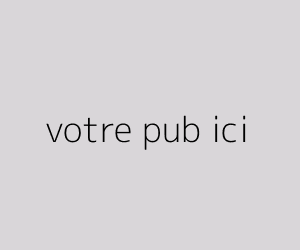- 08:10Urgent Evacuations as Mountain Fire Rages in Ventura County
- 07:34Drought Devastates Amazon Basin: Over 420,000 Children in Crisis
- 18:05Harris Expected to Concede 2024 Presidential Race to Trump in Historic Address
- 17:30Kashmir Assembly Advocates for Restoration of Autonomy Amidst Political Turmoil
- 16:50H.M. the King Mohammed VI conveys congratulations to Mr. Donald Trump on his election as President of the United States
- 16:15The Unfolding Drama of Trump's Campaign: Key Moments That Shaped a Controversial Return
- 15:40The Rise and Fall of Kamala Harris: A Campaign Chronicle
- 14:58Valencia's Emergency Response Faces Criticism Amidst Catastrophic Flooding
- 14:25Asia Prepares for Uncertainty as Trump Returns to Power
Follow us on Facebook
The Melodic Code: Unveiling How Our Brains Decipher Music and Speech
In a crescendo of scientific inquiry, a recent study, published in PLOS Biology, illuminates the intricate mechanisms enabling our brains to seamlessly discern between the melodic strains of music and the rhythmic cadence of spoken language. Spearheaded by Andrew Chang of New York University and an international team of scientists, this groundbreaking research offers profound insights into the auditory processing prowess of the human mind.
While our ears act as the conduit to the auditory domain, the complex process of distinguishing between music and speech unfolds within the recesses of our cerebral cortex. As Chang explains, "Despite the myriad differences between music and speech, from pitch to sonic texture, our findings reveal that the auditory system relies on surprisingly simple acoustic parameters to make this distinction."
At the core of this auditory puzzle lie the foundational principles of amplitude and frequency modulation. Musical compositions exhibit a relatively steady amplitude modulation, oscillating between 1 and 2 Hz, while speech tends to fluctuate at higher frequencies, typically ranging from 4 to 5 Hz. For instance, the rhythmic pulse of Stevie Wonder's "Superstition" hovers around 1.6 Hz, while Anna Karina's "Roller Girl" beats at approximately 2 Hz.
To probe deeper into this phenomenon, Chang and his team conducted four experiments involving over 300 participants. In these trials, subjects were presented with synthetic sound segments mimicking either music or speech, with careful manipulation of speed and regularity of amplitude modulation. They were then tasked with identifying whether the auditory stimuli represented music or speech.
The results unveiled a compelling pattern: segments with slower and more regular modulations (< 2 Hz) were perceived as music, while faster and more irregular modulations (~4 Hz) were interpreted as speech. This led the researchers to conclude that our brains instinctively utilize these acoustic cues to categorize sounds, akin to the phenomenon of pareidolia – the tendency to perceive familiar shapes, often human faces, in random or unstructured visual stimuli.
Beyond mere scientific curiosity, this discovery carries profound implications for the treatment of language disorders such as aphasia, marked by partial or complete loss of communication ability. As the authors note, these findings could pave the way for more effective rehabilitation programs, potentially incorporating melodic intonation therapy (MIT).
MIT operates on the premise that music and singing can activate different brain regions involved in communication and language, including Broca's area, Wernicke's area, the auditory cortex, and the motor cortex. By singing phrases or words to simple melodies, individuals may learn to bypass damaged brain regions and access alternative pathways to restore communicative abilities. Armed with a deeper comprehension of the parallels and disparities in music and speech processing within the brain, researchers and therapists can craft more targeted interventions that harness patients' musical discernment to enhance verbal communication.
Supported by the National Institute on Deafness and Other Communication Disorders and the Leon Levy Neuroscience Fellowships, this study opens new vistas for innovation in communication therapies. By pinpointing the acoustic parameters exploited by our brains, scientists can now develop specialized exercises tailored to leverage patients' musical processing capacities, ultimately augmenting their verbal communication skills.
As the crescendo of scientific inquiry swells, this remarkable discovery reverberates as a harmonious symphony of knowledge, enriching our understanding of the intricate interplay between music, speech, and the extraordinary capabilities of the human brain.



